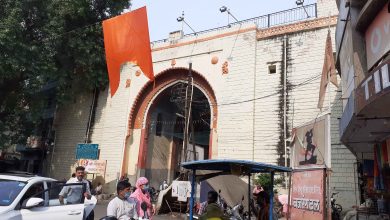100 Fall Ill After ‘Fasting’ Food in Nagpur

Exploring the Mahashivratri Fallout (Fasting food Nagpur): A Fasting Feast Gone Awry
Fasting food Nagpur: In a shocking turn of events, over a hundred individuals in Nagpur and Bhandara found themselves grappling with food poisoning after indulging in the traditional Mahashivratri ‘upvas’ food. The culprit? Singhara atta halwa (water-chestnut flour) and sev, commonly enjoyed during the fasting period on Friday night. Let’s delve into the details of this unfortunate incident that left the city in distress.
The Alarming Numbers: 96 Cases Confirmed, Actual Count Potentially Higher
Nagpur Municipal Corporation (NMC) officials have officially documented 96 cases of food poisoning related to the festive delicacies. However, considering the decentralized nature of the celebration – with many households partaking in the festivities individually – the true numbers might be significantly higher. Private hospitals, not obligated to report such incidents, further complicate the accurate assessment of the situation.
Discrepancies and Denials: Rural Areas vs. Urban Centers
While the district health office in rural areas denies any instances of food poisoning, Shalinitai Meghe Hospital and Research Centre (SMHRC) in Hingna paints a different picture. Eight patients, including two in critical condition, were admitted, revealing a discrepancy in the official narrative. Dr. Khalid Khan from SMHRC highlighted that the consumption of singhara atta halwa and snacks triggered the alarming health issues.
Bhandara’s Battle with Gastritis: A Parallel Affliction
Bhandara, too, faced the repercussions of the festive feasting, with an unspecified number of residents suffering from acute gastritis after consuming singhara atta ‘bhaji.’ Despite these reports, district officials in Bhandara initially denied the presence of a food poisoning epidemic.
The Investigative Response: NMC’s Swift Action
Promptly responding to the crisis, the NMC health department initiated a survey in the affected areas. Water samples were collected for testing, and stool samples were sent to the government lab. Initial findings pointed towards singhara atta of a specific brand as the common source of infection, linking patients from various parts of the city.
Home Treatments and Hospital Shifts: NMC’s Dual Approach
In a bid to address the situation comprehensively, NMC medical teams began home treatments for many patients, reserving hospital beds for those suffering from severe dehydration. This two-pronged strategy aimed at containing the outbreak and providing immediate relief to the affected individuals.
A Cautionary Tale for Festive Celebrations
In the aftermath of this unexpected health crisis, communities must reflect on the importance of food safety during festive occasions. The incident in Nagpur serves as a cautionary tale, urging both authorities and individuals to exercise vigilance and adhere to rigorous quality standards when preparing and consuming festival-specific foods.
FAQs: Unraveling the Nagpur Food Poisoning Incident (Fasting Food Nagpur)
- What caused the food poisoning during Mahashivratri in Nagpur?
- The common denominator was singhara atta halwa, identified as the source of infection.
- Were rural areas in Nagpur affected by the food poisoning outbreak?
- Officially denied by the district health office, rural areas had conflicting reports from Hingna-based SMHRC.
- How did the NMC respond to the crisis?
- NMC swiftly initiated a survey, collected samples for testing, and provided dual treatments – at home and hospitals.
- Was the brand of singhara atta identified as the culprit?
- Preliminary findings pointed to a specific brand of singhara atta as the common source of infection.
- What can communities learn from this incident for future celebrations?
- The incident emphasizes the need for stringent food safety measures during festive periods to prevent such health crises.









